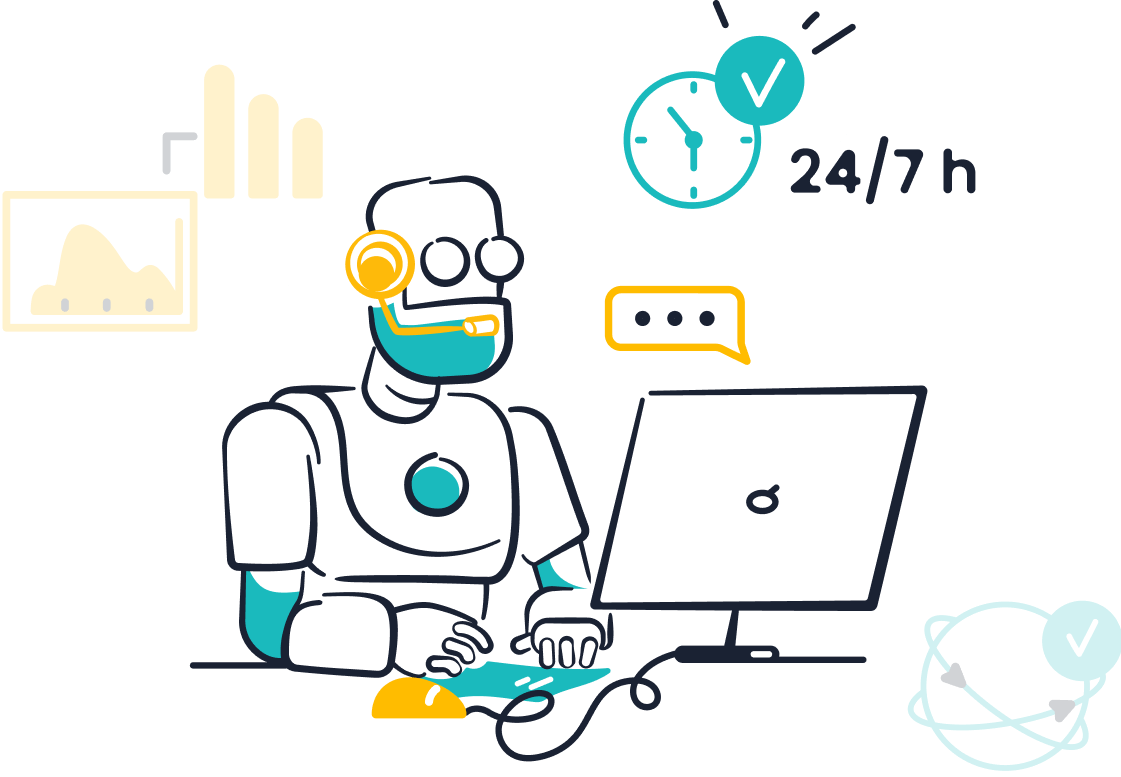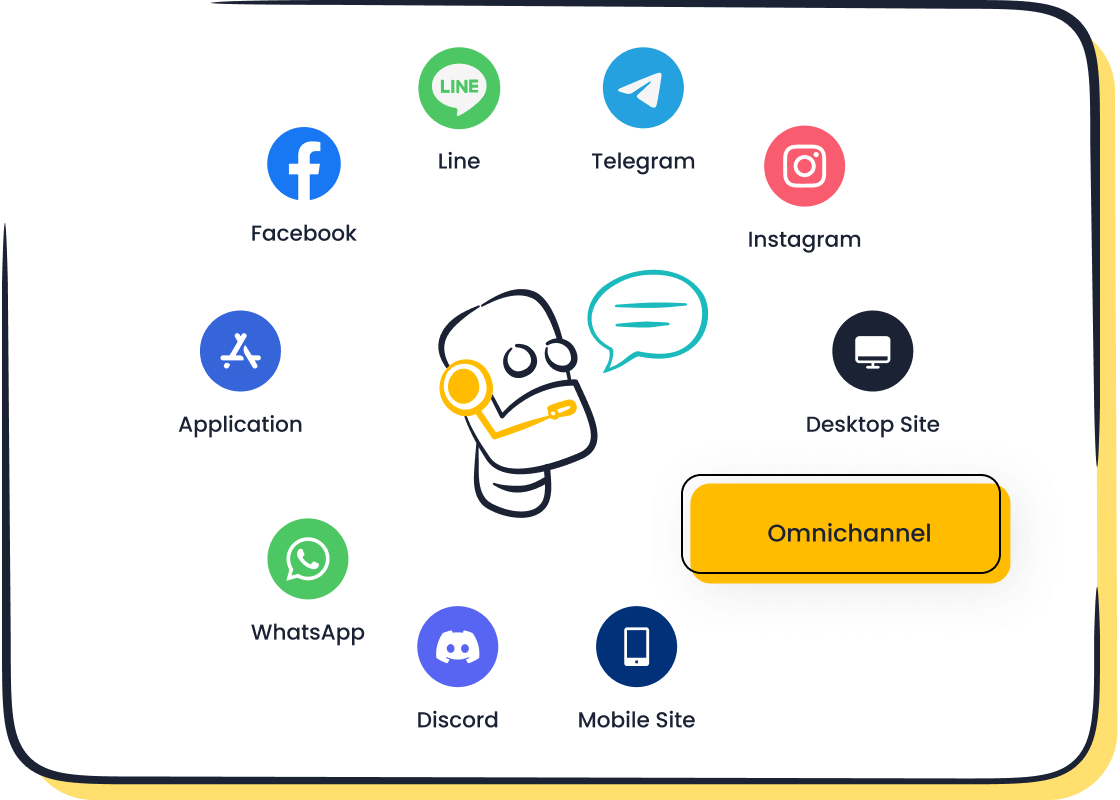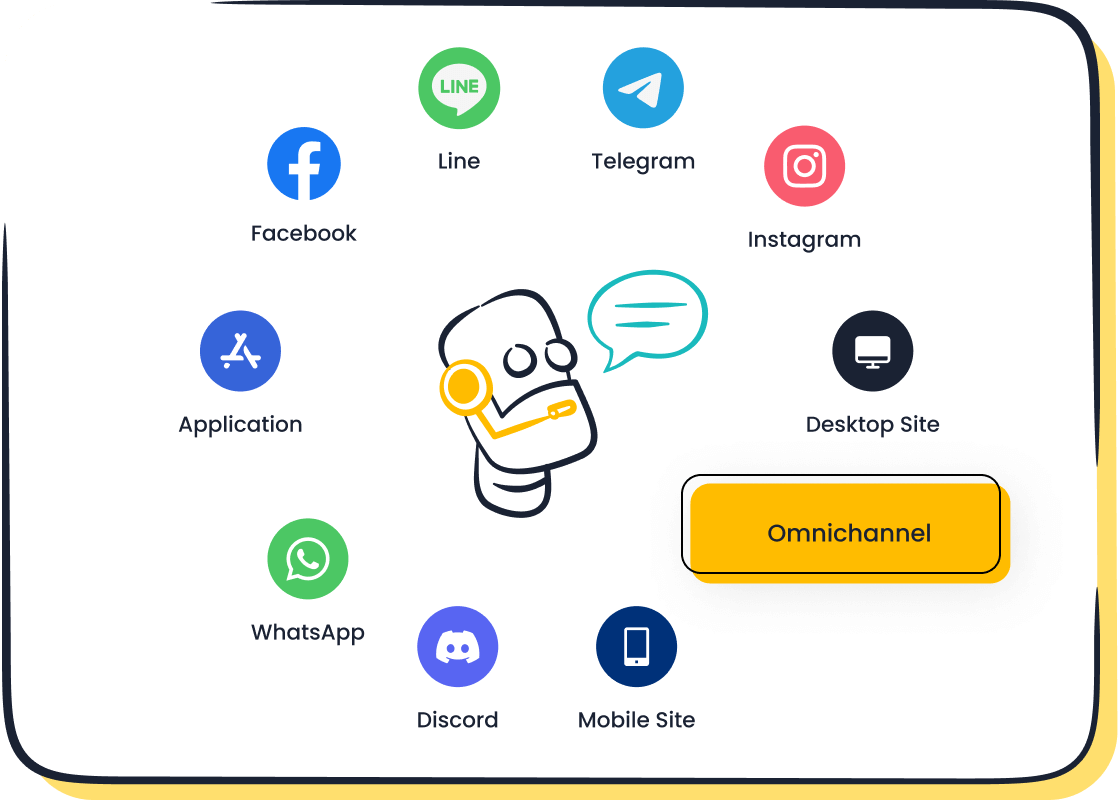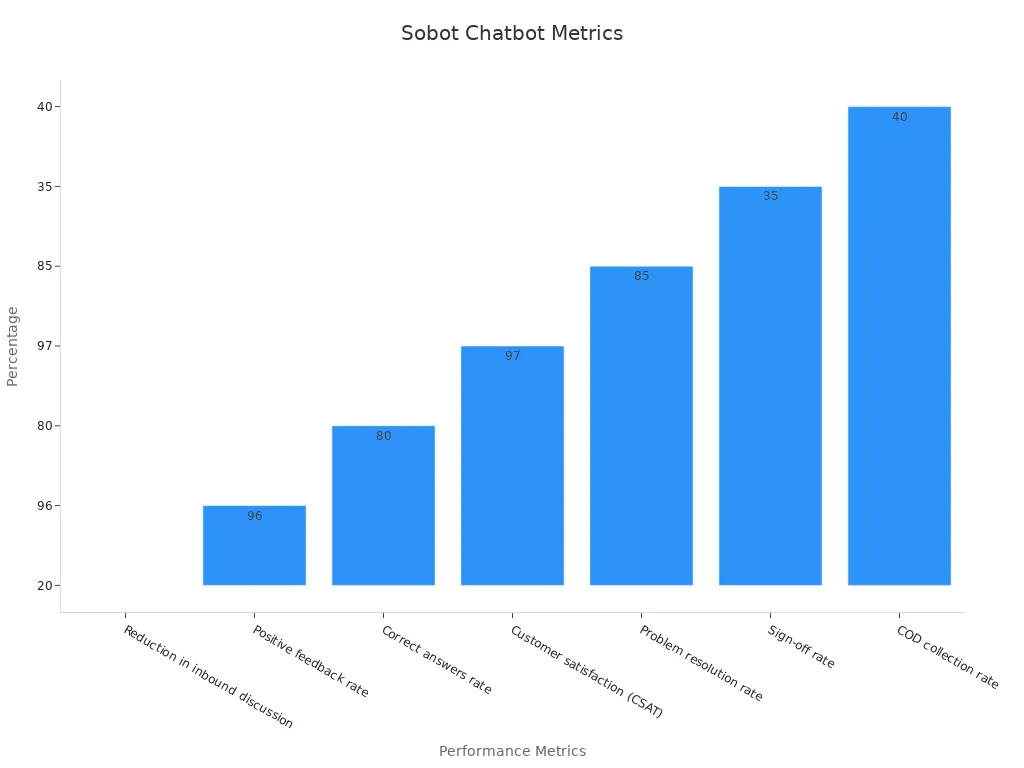Understanding Customer Retention Metrics and Their Impact on Success

Understanding how to measure customer retention is critical for any business aiming to grow sustainably. Retaining a customer costs far less than acquiring a new one. Studies show acquiring new customers can cost 5 to 25 times more. Additionally, a 5% increase in retention can boost profits by as much as 75%.
Your existing customers are your greatest asset. They are 60-70% more likely to buy again, compared to only 5-20% for new prospects. Positive experiences with your brand can lead to 140% more spending over time. Tracking customer retention metrics enables you to identify opportunities to improve customer satisfaction, streamline operations, and strengthen loyalty. Companies like Sobot demonstrate how analyzing these metrics can drive efficiency and long-term success.
What Are Customer Retention Metrics and Why Do They Matter?
Definition of Customer Retention Metrics
Customer retention metrics are tools that help you measure how well your business keeps its customers over time. These metrics provide insights into customer loyalty, satisfaction, and the overall health of your business relationships. For example, the Customer Retention Rate (CRR) shows the percentage of customers who stay with your business during a specific period. Other key metrics include the Churn Rate, which tracks the percentage of customers lost, and Customer Lifetime Value (CLV), which estimates the total revenue a customer brings to your business. By understanding these metrics, you can identify areas for improvement and create strategies to enhance customer loyalty.
Tip: Metrics like the Net Promoter Score (NPS) can also help you gauge how likely your customers are to recommend your business to others, offering valuable insights into their satisfaction levels.
Importance of Retention Metrics in Business Success
Retention metrics play a crucial role in your business's success. They help you understand customer behavior, preferences, and satisfaction levels. This understanding allows you to make informed decisions that improve customer experiences and foster loyalty. Studies show that retaining customers is far more cost-effective than acquiring new ones. According to Harvard Business Review, acquiring a new customer can cost up to five times more than retaining an existing one. Additionally, Bain & Company reports that companies focusing on retention are 60% more profitable.
Tracking these metrics also helps you identify potential issues before they escalate. For instance, a rising churn rate might indicate dissatisfaction with your product or service. By addressing these concerns early, you can reduce churn and improve overall customer satisfaction. Businesses across industries, from retail to technology, have demonstrated that focusing on retention metrics leads to long-term growth and competitive advantages.
| Statistic | Source |
|---|---|
| Increasing customer retention rates by 5% can increase profits by 25-95%. | Harvard Business Review |
| Repeat customers spend 67% more than new customers. | Inc. |
| Loyal customers are worth up to 10 times as much as their first purchase. | White House Office of Consumer Affairs |
Benefits of Tracking Retention Metrics for Growth and Loyalty
Tracking customer retention metrics offers several benefits that directly impact your business's growth and customer loyalty. First, these metrics help you identify opportunities to upsell or cross-sell products, increasing revenue from existing customers. For example, customers who make multiple purchases are 9 times more likely to convert again compared to first-time buyers. Second, retention metrics provide a clear picture of your business's performance, enabling you to refine your strategies and allocate resources effectively.
Another significant benefit is the ability to build stronger relationships with your customers. Loyal customers not only spend more but also act as brand advocates, recommending your business to others. This word-of-mouth marketing can drive new customer acquisition at a lower cost. Additionally, tracking metrics like CLV helps you understand the long-term value of your customers, allowing you to focus on those who contribute the most to your success.
Example: Companies like Samsung have successfully used retention metrics to enhance customer satisfaction. By implementing Sobot's all-in-one contact center solution, Samsung achieved a 97% customer satisfaction rate and a 30% increase in agent efficiency. This demonstrates how tracking and acting on retention metrics can lead to measurable improvements in both customer loyalty and operational efficiency.

Finally, retention metrics help you stay competitive in today's market. With tools like Sobot's AI-powered chatbot, you can automate customer interactions, reduce service costs, and improve satisfaction. These solutions not only enhance efficiency but also ensure your customers feel valued, fostering long-term loyalty.
Key Customer Retention Metrics to Track

Customer Retention Rate (CRR)
Customer Retention Rate (CRR) measures the percentage of customers your business retains over a specific period. This metric highlights how well you maintain relationships with your existing customers. A high CRR indicates strong customer loyalty and satisfaction, while a low CRR may signal underlying issues that need attention.
To calculate CRR, use the formula:
CRR = [(E - N) / S] × 100
Where:
- E = Number of customers at the end of the period
- N = Number of new customers acquired during the period
- S = Number of customers at the start of the period
Different industries have varying benchmarks for CRR. For example:
| Industry | Customer Retention Rate (CRR) |
|---|---|
| SaaS and Subscription | 85%–90% |
| Retail and E-commerce | 30%–50% |
| Telecommunications | 70%–80% |
Tracking CRR helps you balance customer acquisition and retention efforts, ensuring sustainable growth.
Churn Rate and Its Implications
The customer churn rate measures the percentage of customers who stop doing business with you during a specific period. This metric is critical because it directly impacts your revenue and growth potential.
High churn rates often indicate dissatisfaction with your product or service. For subscription-based businesses, this can lead to significant revenue loss. Consider these insights:
- Gross revenue churn shows the total revenue lost from existing customers.
- Net revenue churn accounts for revenue gained from upgrades or expansions, offering a clearer picture of retention.
Monitoring churn rates helps you identify why customers leave and take proactive steps to improve their experience. For example:
- High churn rates make future revenue projections more difficult.
- They often highlight retention issues that need immediate attention.
- Addressing churn can save costs on acquiring new customers and boost long-term revenue.
Reducing churn ensures your business remains competitive and financially stable.
Customer Lifetime Value (CLV) as a Strategic Metric
Customer Lifetime Value (CLV) estimates the total revenue a customer will generate for your business over their lifetime. This metric helps you understand the long-term value of your customers and prioritize retention strategies.
CLV offers several strategic benefits:
- It identifies customers at risk of leaving, enabling timely interventions.
- It reveals which marketing channels attract high-value customers.
- It measures the effectiveness of your campaigns and their ROI.
- It helps you create customer segments based on spending and engagement.
By focusing on CLV, you can allocate resources effectively and maximize the value of your customer relationships. For instance, businesses that prioritize CLV often see a 20% increase in customer retention and a 31% rise in new user signups.
Tip: Tools like Sobot's AI-powered chatbot can enhance CLV by automating interactions, improving efficiency, and delivering personalized experiences.
Net Promoter Score (NPS) for Measuring Loyalty
Net Promoter Score (NPS) is a powerful metric that helps you measure customer loyalty by assessing how likely your customers are to recommend your business to others. This score ranges from -100 to 100 and categorizes respondents into three groups: promoters, passives, and detractors. Promoters are your most loyal customers, while detractors may harm your brand reputation.
Businesses across industries have successfully used NPS to enhance customer loyalty and operational efficiency. For instance:
- Symantec implemented NPS in 2004, leading to a 50% increase in NPS scores, a 13-point rise in satisfaction, and a 30% reduction in support costs.
- Slack uses NPS to refine customer interactions, reducing acquisition costs and improving the effectiveness of its customer success team.
- Herbein identified at-risk clients through NPS, driving a 30% revenue growth in one year by addressing service demands.
A survey of 3,000 customers revealed that 75% of promoters remained loyal over three years, proving NPS's reliability in gauging customer sentiment. However, relying solely on NPS may misclassify loyalty, so combining it with other metrics ensures a more comprehensive view of customer behavior.
By tracking NPS, you can identify areas for improvement and create strategies to turn detractors into promoters. Tools like Sobot's AI-powered chatbot can enhance customer experiences, helping you boost loyalty and satisfaction.
Additional Metrics: Repeat Purchase Rate and Average Order Value
Repeat Purchase Rate (RPR) and Average Order Value (AOV) are essential metrics for understanding customer behavior and driving business growth. RPR measures the percentage of customers who make multiple purchases, while AOV calculates the average amount spent per transaction. Together, these metrics reveal how well your business retains customers and maximizes revenue.
High-performing businesses often achieve repeat purchase rates of 40% or more, while the average rate across eCommerce ranges from 15% to 30%. Consumable products see repeat rates of 30% to 45%, while fashion averages 20% to 25%. Electronics and high-ticket items typically have lower rates, around 10% to 15%.
| Metric | Value/Impact |
|---|---|
| Good repeat customer rate | 25-30% |
| High-performing stores | 40% or higher |
| Consumable products repeat rates | 30-45% |
| Fashion and apparel average | 20-25% |
| Electronics and high-ticket items | 10-15% |
Tracking these metrics helps you identify opportunities to increase customer loyalty and revenue. For example, offering personalized discounts or loyalty programs can encourage repeat purchases and raise AOV. Businesses that focus on these metrics often see higher profitability and stronger customer relationships.
Sobot's marketing solutions can help you optimize these metrics by creating personalized campaigns and re-engaging dormant customers. By leveraging these tools, you can enhance customer loyalty and drive long-term success.
How to Measure Customer Retention Metrics
Understanding how to measure customer retention metrics is essential for improving loyalty and driving growth. Accurate measurement requires reliable data sources, effective tools, and best practices to ensure actionable insights. Below, you’ll find a detailed guide to help you track and analyze these metrics effectively.
Data Sources for Retention Metrics: CRM Systems and Analytics Tools
To measure customer retention accurately, you need robust data sources. CRM systems and analytics tools provide the foundation for tracking key metrics like churn rate, customer lifetime value (CLV), and Net Promoter Score (NPS). These platforms consolidate customer data, enabling you to monitor interactions, purchases, and engagement patterns.
| Metric | Formula | Application in Retention Strategy |
|---|---|---|
| Net Promoter Score (NPS) | % who are promoters (score 9 or 10) – % who are detractors (score 6 or less) = NPS score | Combine NPS feedback with quantitative data to understand retention issues. |
| Customer Satisfaction Score (CSAT) | (number of 4 and 5 responses) ÷ (number of responses) × 100 = CSAT | Implement changes based on feedback and monitor impact on retention rates. |
| Average Session Duration | Total time across all sessions ÷ total number of sessions = Average session duration | Identify features that drive longer sessions and promote them. |
| Feature Adoption Rates | (number of users of a specific feature in the last month ÷ total number of product users) × 100 = Feature adoption rate | Promote underused features to the right user segments. |
| Renewal Rate | (number of customers who renew that month ÷ total number of customers up for renewal) × 100 = Renewal rate | Monitor renewal rates by segment to predict retention success. |
| Engagement Rate | (Total number of active users from a specific channel over a defined time period ÷ total number of users from a specific channel) × 100 = Engagement rate | Track engagement to gauge retention efficacy and identify engaged customer segments. |
For example, tools like Google Analytics can track user behavior on your website, while CRM platforms like HubSpot provide detailed engagement data tied to individual customers. These insights allow you to identify trends and refine your retention strategies.
Tools for Tracking Metrics: Sobot's Chatbot and Other Solutions
The right tools make tracking customer retention metrics more efficient and accurate. Sobot’s AI-powered chatbot is an excellent example of a solution that enhances retention efforts. It automates customer interactions, provides 24/7 support, and collects valuable data on customer behavior. By analyzing this data, you can identify patterns, address pain points, and improve satisfaction.
| Tool/Feature | Description |
|---|---|
| Interactive Dashboards | Visual representations of key retention metrics for real-time monitoring and trend identification. |
| Cohort Analysis | Tracking groups of customers to identify retention patterns. |
| Predictive Analytics | AI tools forecasting future retention trends and identifying at-risk customers. |
| Mobile App Analytics | Tracking in-app user behavior and feature usage patterns. |
| In-App Feedback Collection | Real-time satisfaction data gathered during the customer journey. |
| Cross-Platform Usage Tracking | Analysis of customer movement between different channels. |
Sobot’s chatbot integrates seamlessly with CRM systems, enabling you to unify customer data and gain a comprehensive view of retention metrics. For instance, it can track engagement rates by channel, helping you identify high-value customers and tailor your strategies accordingly. Additionally, tools like Sobot’s marketing solution allow you to create personalized campaigns that boost customer lifetime value and re-engage dormant users.
Best Practices for Accurate Measurement and Analysis
Accurate measurement of customer retention metrics requires adherence to best practices. Start by maintaining clean and reliable data. Regularly validate and update your records to ensure accuracy. Avoid over-relying on client-side events for analysis, as these can lead to incomplete insights.
Here are some additional tips to enhance your retention analysis:
- Adapt your metrics as your product and user base evolve.
- Use retention curves to understand customer behavior over time.
- Incorporate lifecycle indicators to add context to your data.
- Leverage retention insights to improve lead sourcing and acquisition strategies.
For example, proactive data hygiene ensures your metrics reflect real customer behavior, enabling you to make informed decisions. Tools like Sobot’s interactive dashboards and predictive analytics simplify this process, providing real-time insights and forecasts. By following these practices, you can measure retention metrics effectively and drive meaningful improvements in customer loyalty.
Using Retention Metrics to Drive Business Success

Strategies to Improve Customer Retention Rate
Improving your customer retention rate requires a proactive approach. Start by focusing on customer satisfaction. Happy customers are more likely to stay loyal and recommend your business to others. Research shows that increasing retention rates by just 5% can boost profits by 25% to 95% (Bain & Company).
To achieve this, consider these strategies:
- Personalized Experiences: Tailor your interactions based on customer preferences. Tools like Sobot’s AI-powered chatbot can help by delivering customized responses and 24/7 support.
- Loyalty Programs: Reward repeat customers with discounts or exclusive offers. This not only increases retention but also strengthens customer loyalty.
- Feedback Loops: Regularly collect and act on customer feedback. Metrics like Net Promoter Score (NPS) can help you identify areas for improvement.
| Evidence | Description |
|---|---|
| Profit Increase | Increasing customer retention rates by 5% can lead to profit increases of 25% to 95%. |
| Trust in Recommendations | 92% of global consumers trust recommendations from friends and family, highlighting the value of loyal customers. |
By implementing these strategies, you can create a strong foundation for long-term success.
Reducing Churn Through Proactive Engagement
Proactive engagement is key to reducing churn. Instead of waiting for customers to reach out with issues, anticipate their needs and address them early. Companies that prioritize proactive engagement see a 15–20% increase in retention rates.
Here’s how you can engage proactively:
- Onboarding Support: Guide new customers through your product or service. This reduces confusion and builds trust.
- Regular Check-Ins: Use tools like Sobot’s chatbot to send reminders, updates, or helpful tips. This keeps customers engaged and informed.
- Problem Resolution: Address potential issues before they escalate. For example, if a subscription renewal is due, send a reminder with added value, such as a discount.
Satisfied customers are more likely to stay and refer others, enhancing both retention and referral business. Proactive engagement not only reduces churn but also increases customer lifetime value.
Leveraging CLV to Optimize Marketing and Sales Efforts
Customer lifetime value (CLV) is a strategic metric that helps you focus on high-value customers. By understanding CLV, you can allocate resources effectively and maximize returns.
For example, companies like Netflix and Amazon use CLV to personalize recommendations and target at-risk customers with retention strategies. This approach reduces churn and boosts engagement.
| Company | Application of CLV |
|---|---|
| Netflix | Personalized recommendations and retention strategies for high CLV customers. |
| Amazon | Effective cross-selling and upselling to enhance overall sales and customer value. |
| Spotify | Targeted offers based on CLV and behavior to improve retention and loyalty. |
You can apply similar strategies by segmenting your customers based on their CLV. Use tools like Sobot’s marketing solution to create personalized campaigns that re-engage dormant customers and encourage repeat purchases. This not only enhances customer loyalty but also drives sustainable growth.
Enhancing Customer Experience with NPS Insights
Net Promoter Score (NPS) offers a clear view of how likely your customers are to recommend your business. By analyzing NPS data, you can uncover actionable insights to improve customer experience and loyalty. Businesses across industries have successfully leveraged NPS to enhance their services.
- Apple uses NPS to measure loyalty and satisfaction, leading to better in-store service and support.
- American Express identifies pain points through NPS feedback, improving service training and resolving issues faster.
- Slack analyzes NPS data to refine its platform, introducing features that boost user retention.
You can follow similar strategies to elevate your customer experience. For example, segmenting NPS feedback by customer type helps you address specific needs. Promoters may appreciate loyalty rewards, while detractors might need personalized support to rebuild trust.
Sobot’s AI-powered chatbot can complement your NPS efforts by automating feedback collection and delivering tailored responses. This approach ensures every customer feels valued, fostering long-term loyalty.
Role of Sobot's Chatbot in Boosting Retention and Efficiency
Sobot’s AI-powered chatbot plays a pivotal role in improving customer retention and operational efficiency. By automating routine interactions, the chatbot reduces inbound discussion volume by 20%, allowing your team to focus on complex issues. Its 24/7 availability ensures customers receive timely support, enhancing satisfaction.
| Metric | Value |
|---|---|
| Reduction in inbound discussion | 20% |
| Positive feedback rate | 96% |
| Correct answers rate | 80% |
| Customer satisfaction (CSAT) | 97% |
| Problem resolution rate | 85% |
| Sign-off rate | 35% increase |
| COD collection rate | 40% increase |

Over two years, Sobot’s chatbot has achieved remarkable results. It resolved 85% of issues efficiently and maintained a 97% CSAT score. Additionally, its ability to provide accurate answers 80% of the time has significantly improved customer trust.
By integrating Sobot’s chatbot, you can streamline operations, reduce costs, and enhance the overall customer experience. Its multilingual capabilities and no-coding-required setup make it a versatile solution for businesses of all sizes.
Overcoming Challenges in Tracking Retention Metrics
Addressing Data Collection and Accuracy Issues
Accurate data collection is the foundation of effective retention metrics. Without reliable data, your retention strategies may fail to deliver results. Many businesses struggle with incomplete or inaccurate customer information. According to a survey by Experian, 75% of businesses believe their customer contact data is incorrect. This can lead to wasted marketing efforts and poor customer experiences.
To address these challenges, you should:
- Compare data values against trusted sources to ensure accuracy.
- Monitor error rates to identify recurring data quality issues.
- Practice routine maintenance and establish clear ownership of data.
Building a culture of accuracy is equally important. Regular workshops and alignment on data standards across teams can help ensure everyone values data quality. Investing in tools like Sobot’s chatbot can also streamline data collection by automating interactions and reducing human error.
Avoiding Misinterpretation of Retention Metrics
Misinterpreting retention metrics can lead to flawed strategies. For example, relying on a single metric, such as churn rate, may not provide a complete picture of customer behavior. Instead, you should use a balanced set of metrics to gain a comprehensive understanding.
Here are some common pitfalls to avoid:
- Ignoring direct customer feedback alongside numerical metrics.
- Overcomplicating metrics by tracking too many irrelevant data points.
- Neglecting industry benchmarks when evaluating your performance.
- Failing to review and adjust metrics regularly to stay relevant.
By focusing on actionable metrics and aligning them with your goals, you can make informed decisions. Tools like Sobot’s dashboards simplify complex data, helping you interpret metrics effectively and avoid costly mistakes.
Aligning Retention Goals with Business Objectives
Retention goals should align with your broader business objectives to ensure long-term success. Strategic models like the Balanced Scorecard can help you link retention strategies to financial, customer, and operational goals. For example, this model balances financial metrics with customer satisfaction, providing a holistic view of performance.
| Model | Description | Benefits |
|---|---|---|
| Strategic Alignment Model | Aligns departments, teams, and processes across market, business, and organizational systems. | Encourages collaboration, establishes governance, implements performance metrics, and adapts dynamically. |
| Balanced Scorecard | Links strategy to execution, measuring performance from financial, customer, internal processes, and learning perspectives. | Balances financial and non-financial metrics for a comprehensive view of business performance. |
By adopting these models, you can ensure your retention efforts contribute to overall business growth. For instance, Sobot’s marketing solutions help you tailor engagement strategies to customer segments, boosting retention while driving revenue.
Customer retention metrics provide essential insights into your business's ability to maintain loyalty and drive sustainable growth. Monitoring these metrics helps you identify dissatisfaction early, reduce churn, and strengthen long-term relationships. For example, tracking churn rate prevents revenue loss, while focusing on retention boosts customer lifetime value and creates predictable revenue streams.
Using tools like Sobot's AI-powered chatbot simplifies retention efforts. It automates customer interactions, enhances satisfaction, and reduces operational costs. By consistently analyzing retention metrics, you can optimize strategies, improve customer experiences, and achieve lasting success.
| Evidence Description | Key Insight |
|---|---|
| A high churn rate indicates dissatisfaction or disengagement, leading to lost revenue if not addressed. | Monitoring churn rate is crucial for identifying customer dissatisfaction and preventing revenue loss. |
| Customer retention is more cost-effective than acquiring new ones. | Retaining existing customers is essential for long-term business success and sustainability. |
| Customer retention boosts lifetime customer value (CLV), increasing revenue. | Loyal customers contribute to predictable revenue streams and enhance financial stability. |
| Customer retention drives sustainable revenue growth by building long-term relationships. | Understanding customer needs fosters loyalty and creates a stable revenue base. |
| Prioritizing customer retention helps reduce acquisition costs and strengthen brand loyalty. | Focusing on customer satisfaction lays the foundation for long-term success and resilience. |
Tip: Regularly monitor retention metrics and leverage tools like Sobot's Chatbot to transform insights into actionable improvements.
FAQ
What are customer retention metrics?
Customer retention metrics measure how well your business keeps customers over time. These metrics include churn rate, customer retention rate (CRR), and customer lifetime value (CLV). Tracking them helps you understand customer loyalty and satisfaction, enabling you to improve your strategies and grow sustainably.
Why is churn rate important?
Churn rate shows the percentage of customers who stop using your product or service. A high churn rate signals dissatisfaction or disengagement. Monitoring this metric helps you identify issues early, reduce customer loss, and improve overall satisfaction.
How can Sobot's chatbot improve retention?
Sobot's chatbot automates customer interactions, providing 24/7 support. It resolves common queries quickly, saving time and improving satisfaction. Its personalized responses and multilingual capabilities enhance customer experiences, making them feel valued and increasing loyalty.
What is the best way to calculate customer retention rate?
Use this formula:
CRR = [(E - N) / S] × 100
E = Customers at the end of the period
N = New customers during the period
S = Customers at the start of the period
This calculation shows the percentage of customers retained over time.
How does Net Promoter Score (NPS) help your business?
NPS measures customer loyalty by asking how likely they are to recommend your business. High scores indicate satisfied customers who may promote your brand. Use NPS insights to improve services, address concerns, and turn detractors into loyal advocates.
See Also
Excelling in Retail Live Chat Communication Strategies
Ten Strategies to Enhance Customer Satisfaction via Live Chat
Improving Call Center Efficiency Through Effective Monitoring
Perfecting Live Chat Techniques for Superior Customer Support
